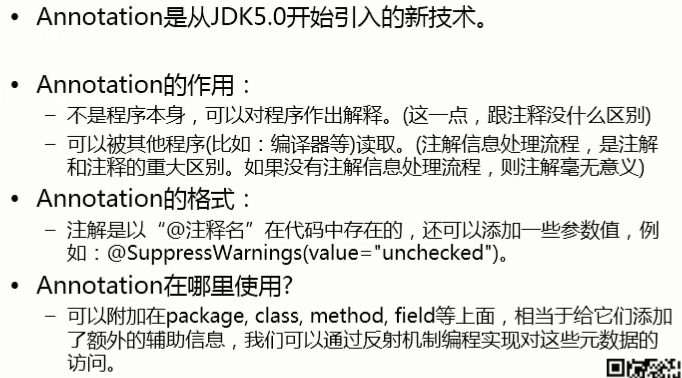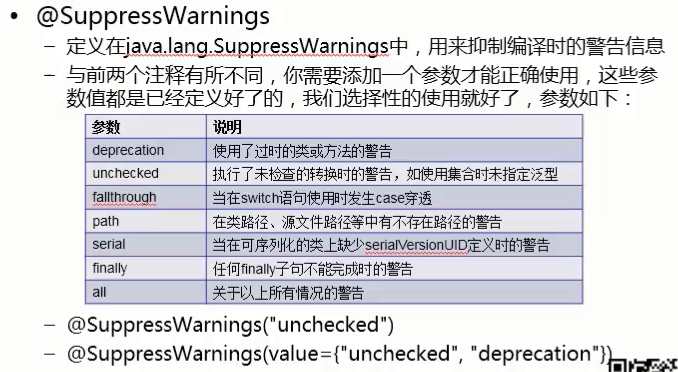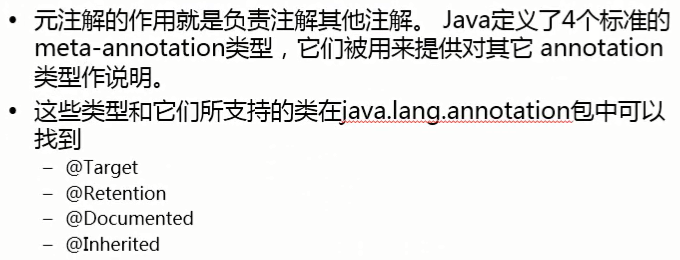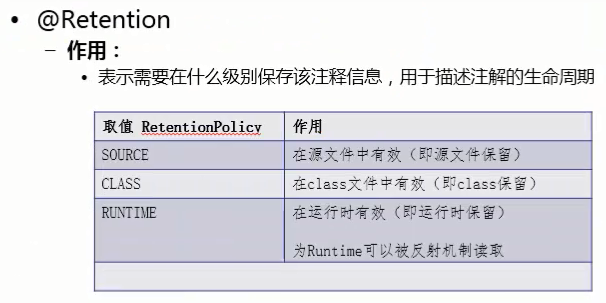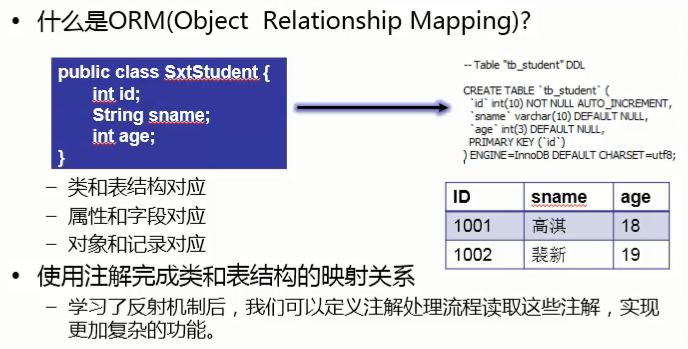本文主要是介绍注解_Annotation_内置注解_自定义注解_反射机制读取注解JAVA208-210,希望对大家解决编程问题提供一定的参考价值,需要的开发者们随着小编来一起学习吧!
来源:http://www.bjsxt.com/
一、S02E208_01注解_Annotation、内置注解
什么是注解
内置注解
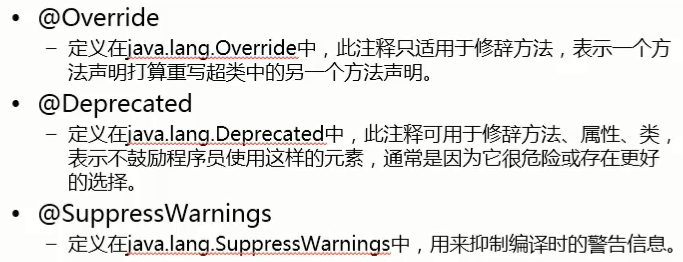
二、S02E209_01自定义注解
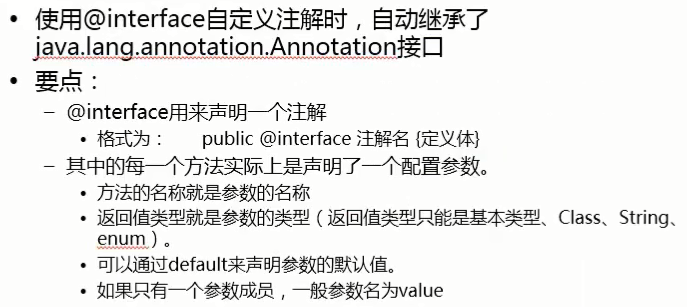
元注解
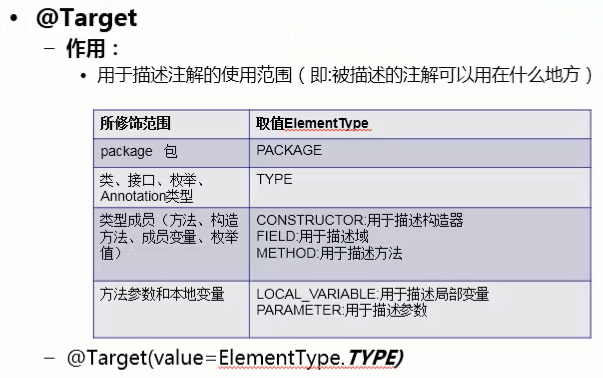
package com.test.annotation;@MyAnnotation01
public class Demo01 {@MyAnnotation01(age=19,studentName="test",id=1001,schools={"北大","浙大"})public static void main(String[] args) {}@MyAnnotation02(value="aaa")//或者("aaa")public void test(){}
}package com.test.annotation;import java.lang.annotation.ElementType;
import java.lang.annotation.Retention;
import java.lang.annotation.RetentionPolicy;
import java.lang.annotation.Target;@Target(value={ElementType.METHOD,ElementType.TYPE})
@Retention(RetentionPolicy.RUNTIME)
public @interface MyAnnotation01 {String studentName() default "";int age() default 0;int id() default -1;String[] schools() default{"清华","复旦"};
}package com.test.annotation;import java.lang.annotation.ElementType;
import java.lang.annotation.Retention;
import java.lang.annotation.RetentionPolicy;
import java.lang.annotation.Target;@Target(value={ElementType.METHOD,ElementType.TYPE})
@Retention(RetentionPolicy.RUNTIME)
public @interface MyAnnotation02 {String value();
}三、S02E210_01反射机制读取注解
注解作业
package com.test.annotation2;import java.lang.annotation.Annotation;
import java.lang.reflect.Field;/*** 使用反射读取注解的信息,模拟处理注解信息的流程*/
public class Demo {public static void main(String[] args) {try {Class clazz = Class.forName("com.test.annotation2.SxtStudent");//获取类的所有有效注解Annotation[] annotations = clazz.getAnnotations();for (Annotation a : annotations) {System.out.println(a);}//获取类的指定的注解SxtTable st = (SxtTable) clazz.getAnnotation(SxtTable.class);System.out.println(st.value());//获取类的属性的注解Field f = clazz.getDeclaredField("sname");SxtField sxtField = f.getAnnotation(SxtField.class);System.out.println(sxtField.columnName()+"--"+sxtField.type()+"--"+sxtField.length());//根据获取的表名和字段的信息,拼出DDL语句,然后,使用JDBC执行这个SQL,在数据库中生成相关的表} catch (Exception e) {e.printStackTrace();}}
}package com.test.annotation2;@SxtTable("tb_student")
public class SxtStudent {@SxtField(columnName="id",type="int",length=10)private int id;@SxtField(columnName="sname",type="varchar",length=10)private String sname;@SxtField(columnName="age",type="int",length=3)private int age;public int getId() {return id;}public void setId(int id) {this.id = id;}public String getStudentName() {return sname;}public void setStudentName(String studentName) {this.sname = studentName;}public int getAge() {return age;}public void setAge(int age) {this.age = age;}
}package com.test.annotation2;import java.lang.annotation.ElementType;
import java.lang.annotation.Retention;
import java.lang.annotation.RetentionPolicy;
import java.lang.annotation.Target;@Target(value={ElementType.TYPE})
@Retention(RetentionPolicy.RUNTIME)
public @interface SxtTable {String value();
}package com.test.annotation2;import java.lang.annotation.ElementType;
import java.lang.annotation.Retention;
import java.lang.annotation.RetentionPolicy;
import java.lang.annotation.Target;@Target(value={ElementType.FIELD})
@Retention(RetentionPolicy.RUNTIME)
public @interface SxtField {String columnName();String type();int length();
}控制台输出
@com.test.annotation2.SxtTable(value=tb_student)
tb_student
sname--varchar--10这篇关于注解_Annotation_内置注解_自定义注解_反射机制读取注解JAVA208-210的文章就介绍到这儿,希望我们推荐的文章对编程师们有所帮助!
